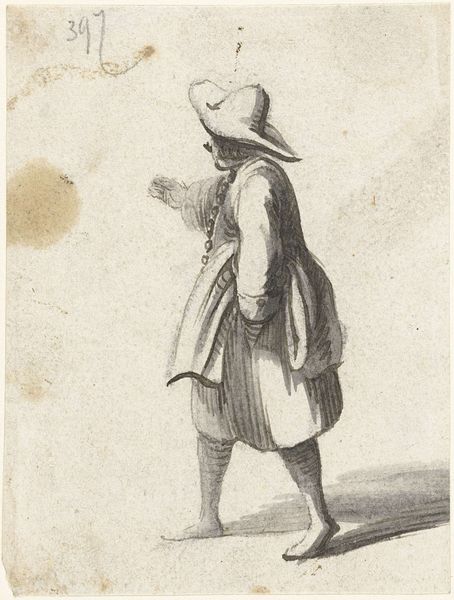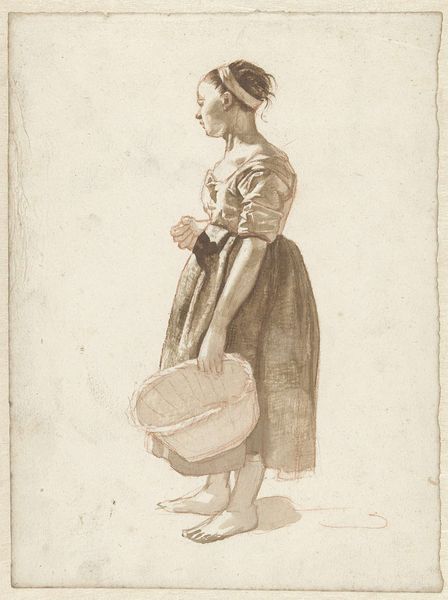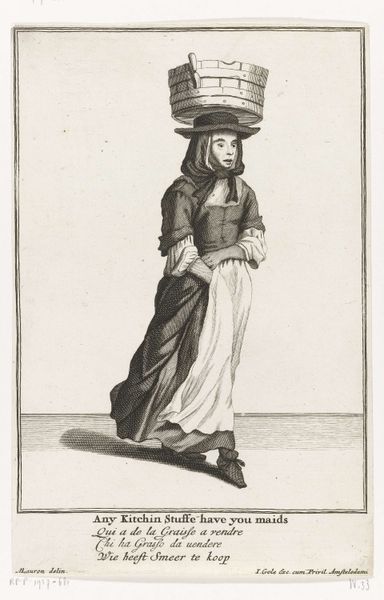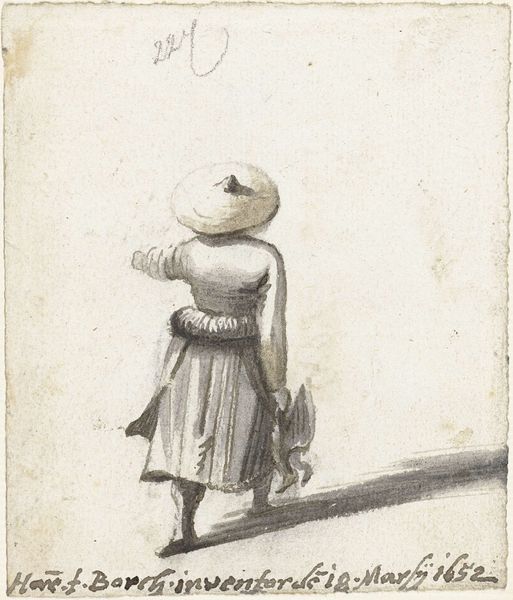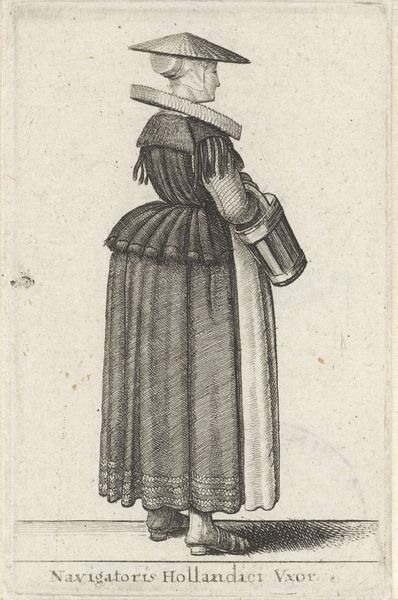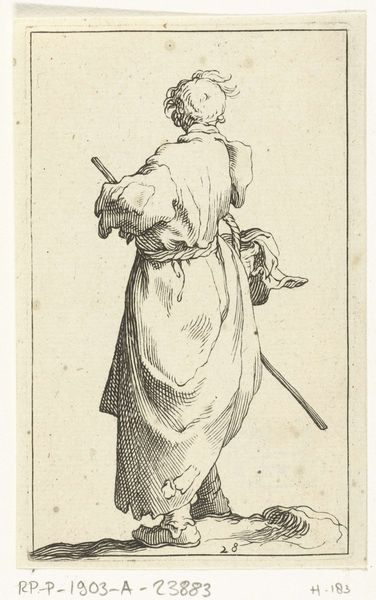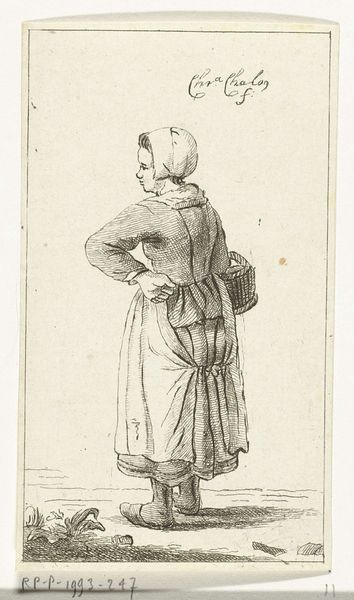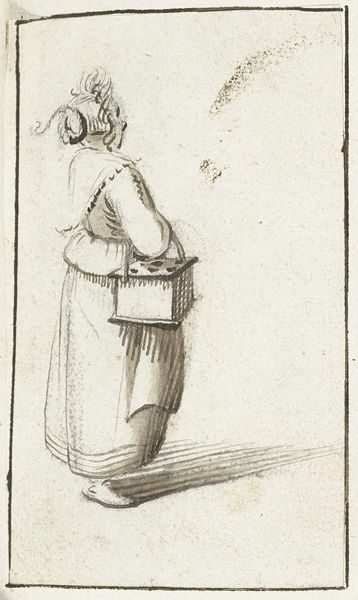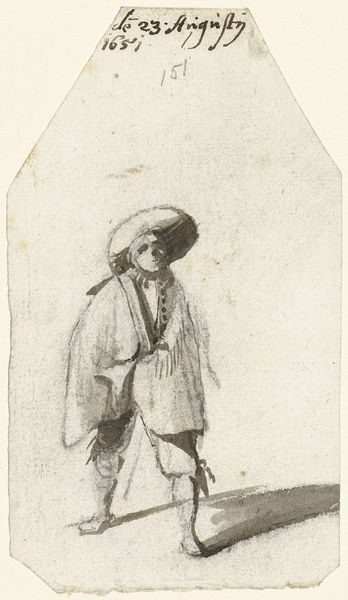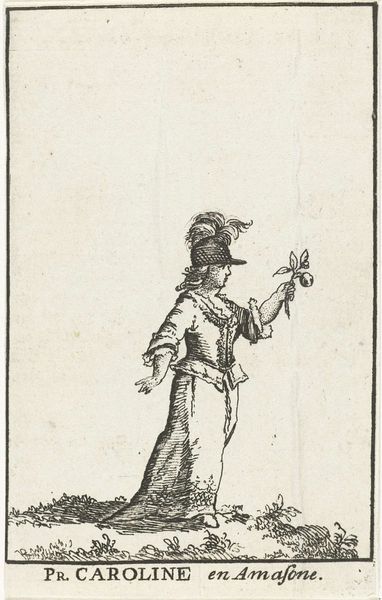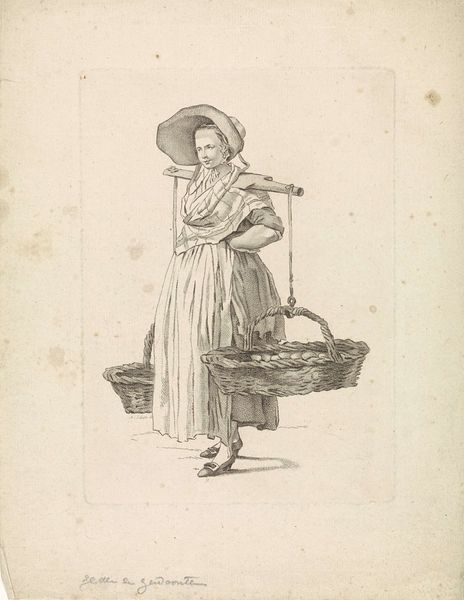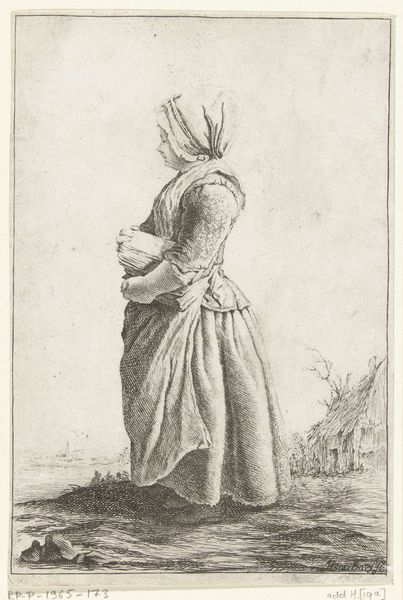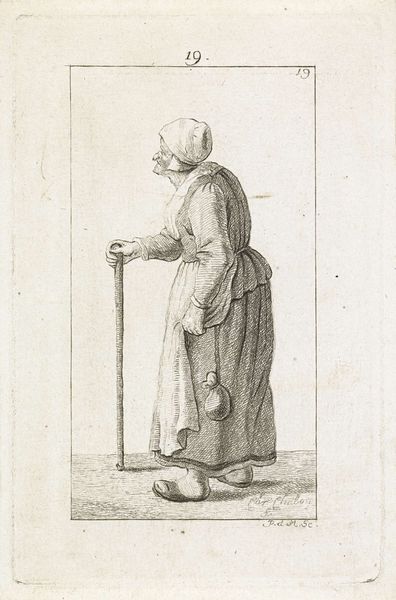
Vrouw met strohoed en een mand voor gevogelte, van achteren c. 1652
0:00
0:00
harmenterborch
Rijksmuseum
drawing, paper, ink
#
portrait
#
drawing
#
imaginative character sketch
#
light pencil work
#
quirky sketch
#
dutch-golden-age
#
paper
#
personal sketchbook
#
ink
#
idea generation sketch
#
sketchwork
#
sketchbook drawing
#
genre-painting
#
storyboard and sketchbook work
#
cartoon carciture
#
sketchbook art
Dimensions: height 79 mm, width 46 mm
Copyright: Rijks Museum: Open Domain
Curator: This ink and wash drawing, held here at the Rijksmuseum, is by Harmen ter Borch. It's entitled "Vrouw met strohoed en een mand voor gevogelte, van achteren," which translates to "Woman with straw hat and a basket for fowl, from the back," and it dates from around 1652. Editor: My immediate impression is the beautiful economy of line. Ter Borch captured so much with so little; the fall of the fabric, the curve of the basket... it feels both precise and effortlessly rendered. You can almost feel the texture of the straw hat! Curator: Exactly! It’s likely a study for a larger composition, offering insight into the material culture of the Dutch Golden Age. It allows us to peek into the everyday life, social customs, and artistic processes of that time. We see this figure from behind and that positioning can make the work read as democratic and relatable for viewers. Editor: And notice how the ink wash creates volume with very careful gradation. It draws my eye specifically to the woven structure of that bird basket. How was something like that actually produced and who was the artisan who actually made the bird carrier, right? Were these all handmade? Curator: I agree, understanding how objects were circulated and consumed, particularly when they appear in paintings, sheds light on socio-economic dynamics within 17th century Dutch society. It prompts us to reflect on who had access to what, and what kind of markets thrived at that time. Also notice the pose: her anonymity allows the contemporary viewer to imagine herself in the painting as someone selling items in a marketplace. Editor: And in its very execution, it reminds us that artistic production is itself labor. I wonder about Ter Borch, capturing this fleeting figure. This artwork becomes not only a record of Dutch life, but an imprint of artistic labor, transforming everyday moments through specific and demanding material processes. Curator: Indeed, analyzing artworks through both socio-cultural and material frameworks truly provides for a more complete view of history. Editor: I agree! It seems as though understanding an artwork really hinges on recognizing its tangible existence.
Comments
No comments
Be the first to comment and join the conversation on the ultimate creative platform.
